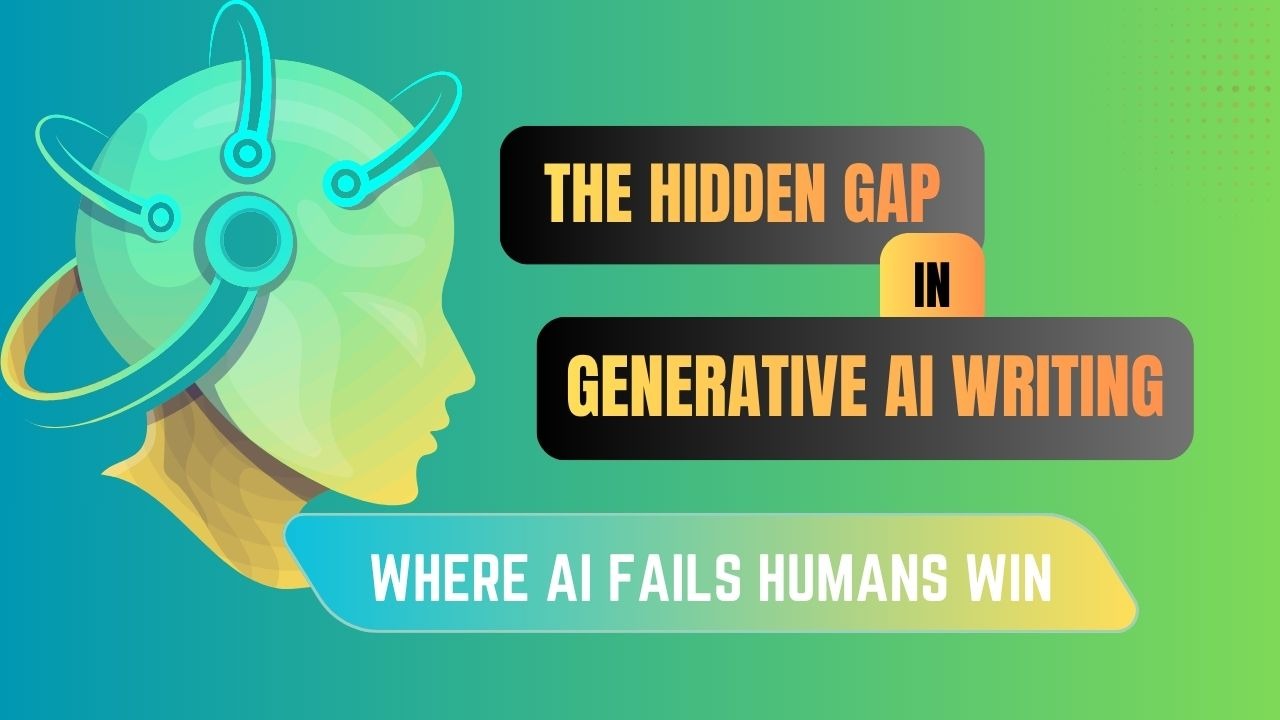AI-powered writing is now everywhere from breezy LinkedIn posts to hefty blog articles, companies and creators are spinning up content with ChatGPT and friends like it’s nothing. It’s faster, it’s cheaper, it scales. But not everything AI writes feels genuine, right.
Ever found a piece of written paragraph online and thought, That’s the AI effect. The content is often technically correct, but it’s too polished, too bland, or lacking that emotional spark the personality, opinion, or even the little imperfections that make real writing feel alive.
This gap is why tools like AI content checker are becoming essential now. This kind of AI tool will help creators check out whether their content sounds like something a real human would say or if it’s generated using generative AI models.
When AI Writes But Misses the Meaning
We all love shortcuts. Need a blog post? AI’s got you. Product descriptions? An essay in under a minute?
But the truth is not always better. Especially if what you’re publishing feels like it was assembled by generative AI model logic instead of a thinking person.
Search engines have caught on, too. Google isn’t banning AI content outright, but it’s certainly not rolling out the red carpet for low-value, repetitive text that feels like it was scraped from 10,000 other blog posts. And that’s exactly what you get when you publish AI-generated drafts without a human touch.
Students, essays, and the shift toward AI-generated writing
AI isn’t just reshaping content marketing it’s changing classrooms, too. Students use AI to draft essays, summarize chapters, or generate answers faster than ever before. But what’s missing is the student’s voice: the unique thought process, the personal examples, the mistakes that lead to insights.
Educators now use AI detectors to identify content that was likely written with little to no personal engagement. And it’s not about punishing students for using AI it’s about preserving the integrity of original thought, and preventing the erosion of learning through shortcuts.
Everyday use cases where AI still falls short
AI has made huge progress in assisting with language, but it’s still not built for everything. Here are a few areas where its limitations are clear.
Branding
When dozens of competing brands use AI to generate taglines, everything starts to sound the same. The result is clean, grammar-correct slogans that say very little.
Journalism
AI can summarize an article, but it can’t sit in a press conference, ask a difficult follow-up, or identify what “feels off” in a source’s answer.
Customer service
Automated responses can explain policies, but they can’t empathize. They can’t notice the frustration of a customer who just wants to feel heard and not processed.
Why the Human Voice Still Matters
We don’t remember summaries. We remember stories. A lived experience. The moment someone said, “Oh wow, same here.”
That’s what human writing brings to the table: the unexpected turns, the weird metaphor, the anger, the humor the things you can’t engineer. AI has structure. Humans have emotions.
And in a world where authenticity is currency, audiences can sniff out generic content faster than ever. Same goes for Google the search giant increasingly prioritizes original, human-centered content, not AI blurbs in disguise.
The right way to use Generative AI
It’s not about choosing between human writing or generative AI. The most successful creators and teams use both in ways that complement each other.
Use AI to brainstorm ideas and organize information faster.
Draft quickly using AI, then revise heavily.
Run the content through an AI detector to identify AI tone patterns early.
Add your personal voice: stories, commentary, brand personality, real-life examples.
Edit carefully: fact-check, restructure, and refine for clarity and emotional depth.
Publish only after a human review to ensure accuracy and authenticity.
If you’re in a rush, don’t like writing, or just can’t make the content grammarly error free with your hand there’s another option to use AI humanizer tool by zerogpt. This AI tool can take any AI text and rewrite it so it sounds more like a real person wrote it. It’s not perfect, but it’s much better than using text content directly from chatgpt, gemini, claude or any generative AI models.
Ethical and SEO considerations
The best content has never been about whether it was written by AI or a human. It has always been about͏ serving a clear purpose. Whether it is informative, clear, credible, and original. Google rewards these characteristics no matter how the content was generated! So, what should we do?
Using AI detection tools can help publishers keep their integrity in industries where accuracy and trust are very important. These tools aren’t perfect but they are getting better fast. They work best if you treat them as guidance, not as absolute truth.
read more : Why Working with the Best Scooter Sharing App Development Company Boosts User Retention
Final thoughts
Can AI write? Yes. Sometimes impressively well. But it still can’t feel. It can’t break rules for effect. It can’t lean into a joke or write a sentence just to make you raise an eyebrow.
And that’s why humans aren’t just “still necessary” they’re at the heart of all writing that matters.
The future isn’t human or AI. It’s both, working in sync.
Use AI. But write like you. Because algorithms don’t buy, like, comment, or care. Humans do.
